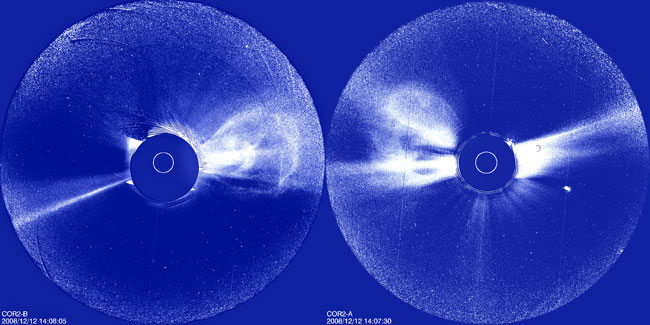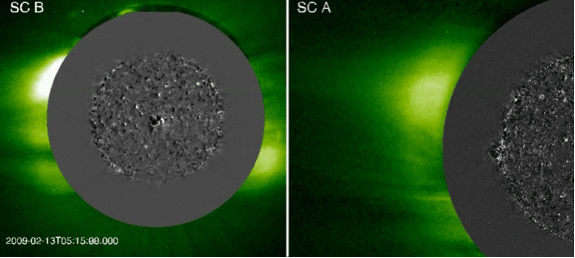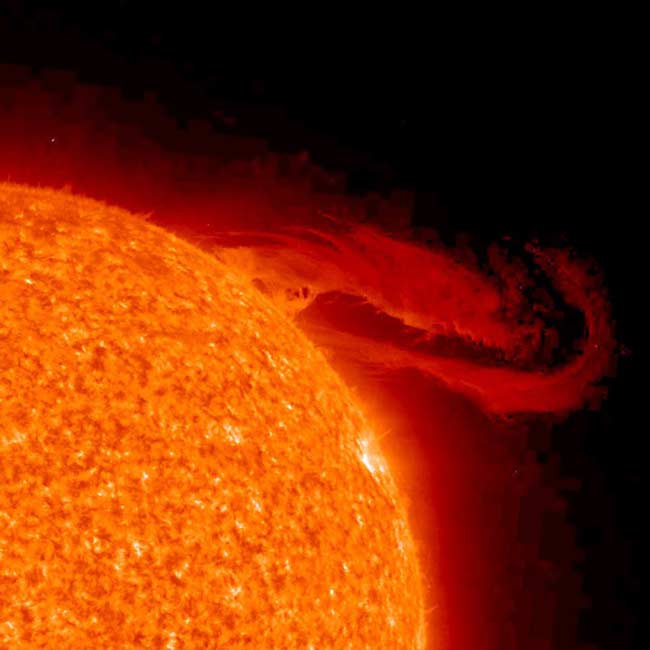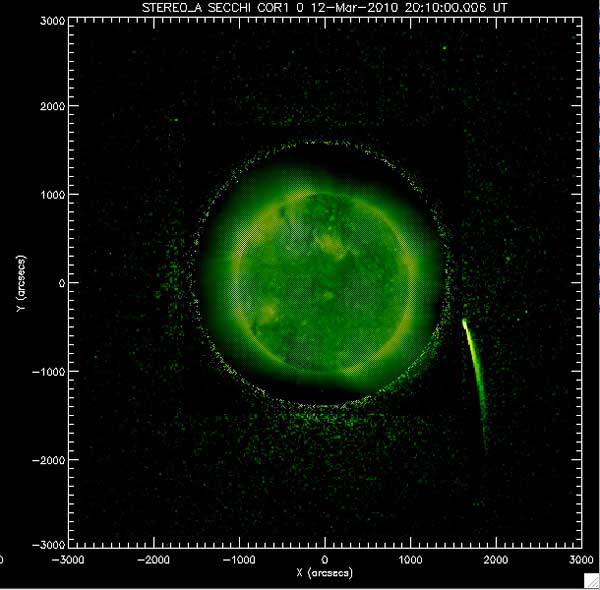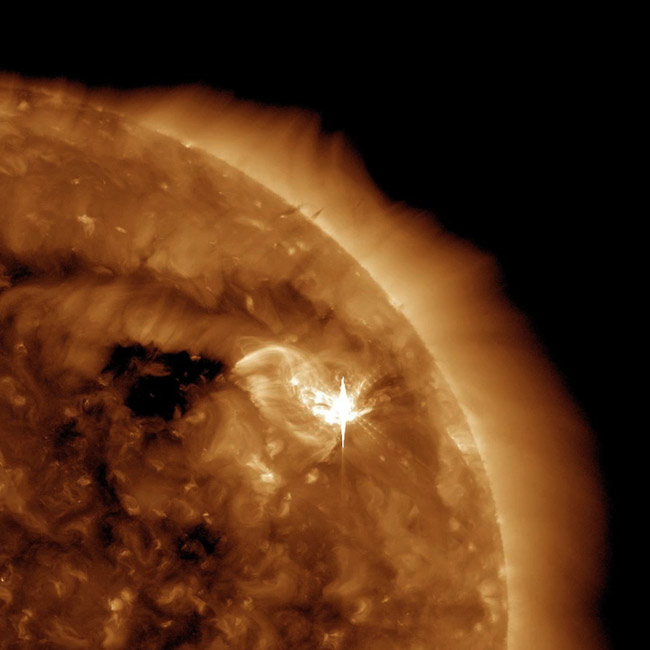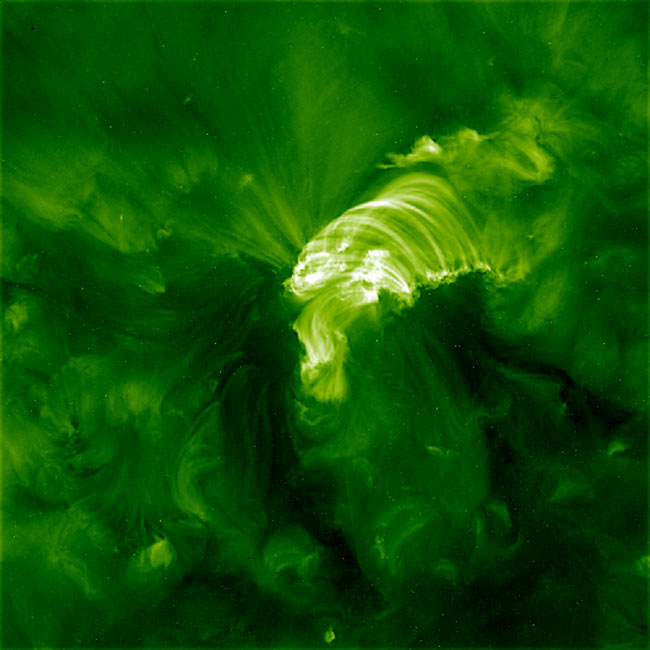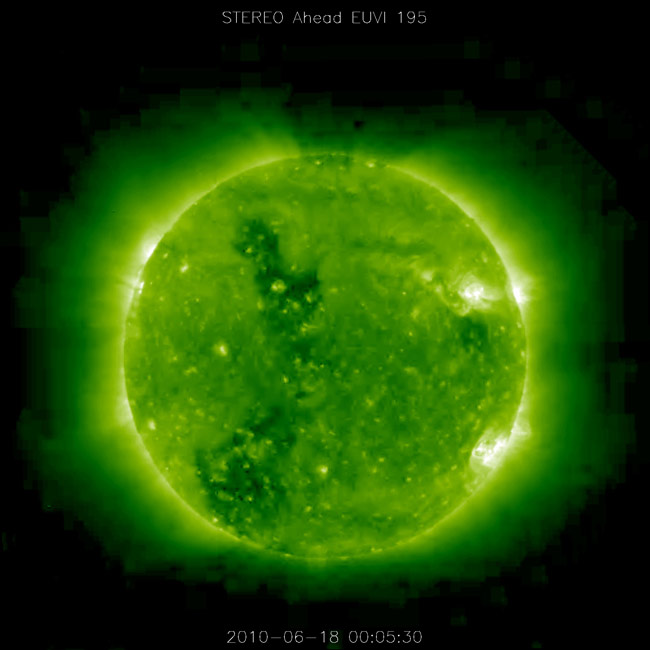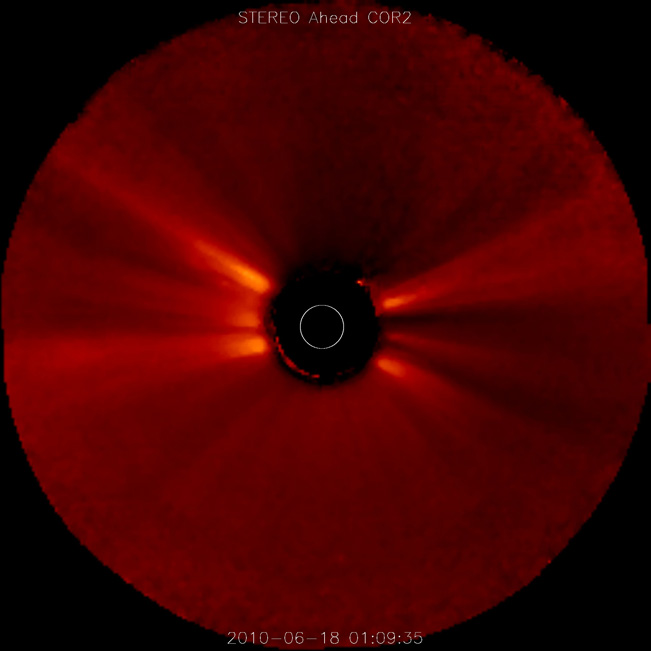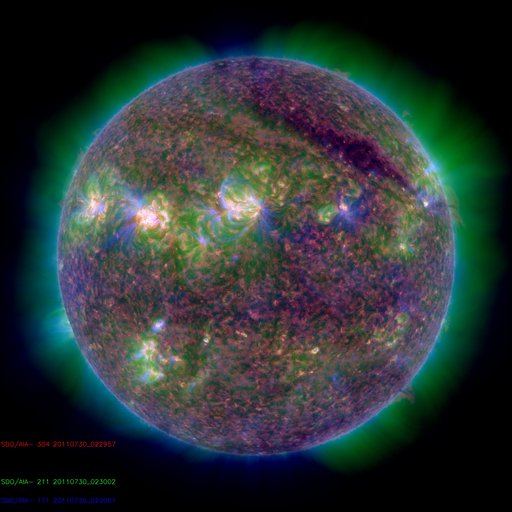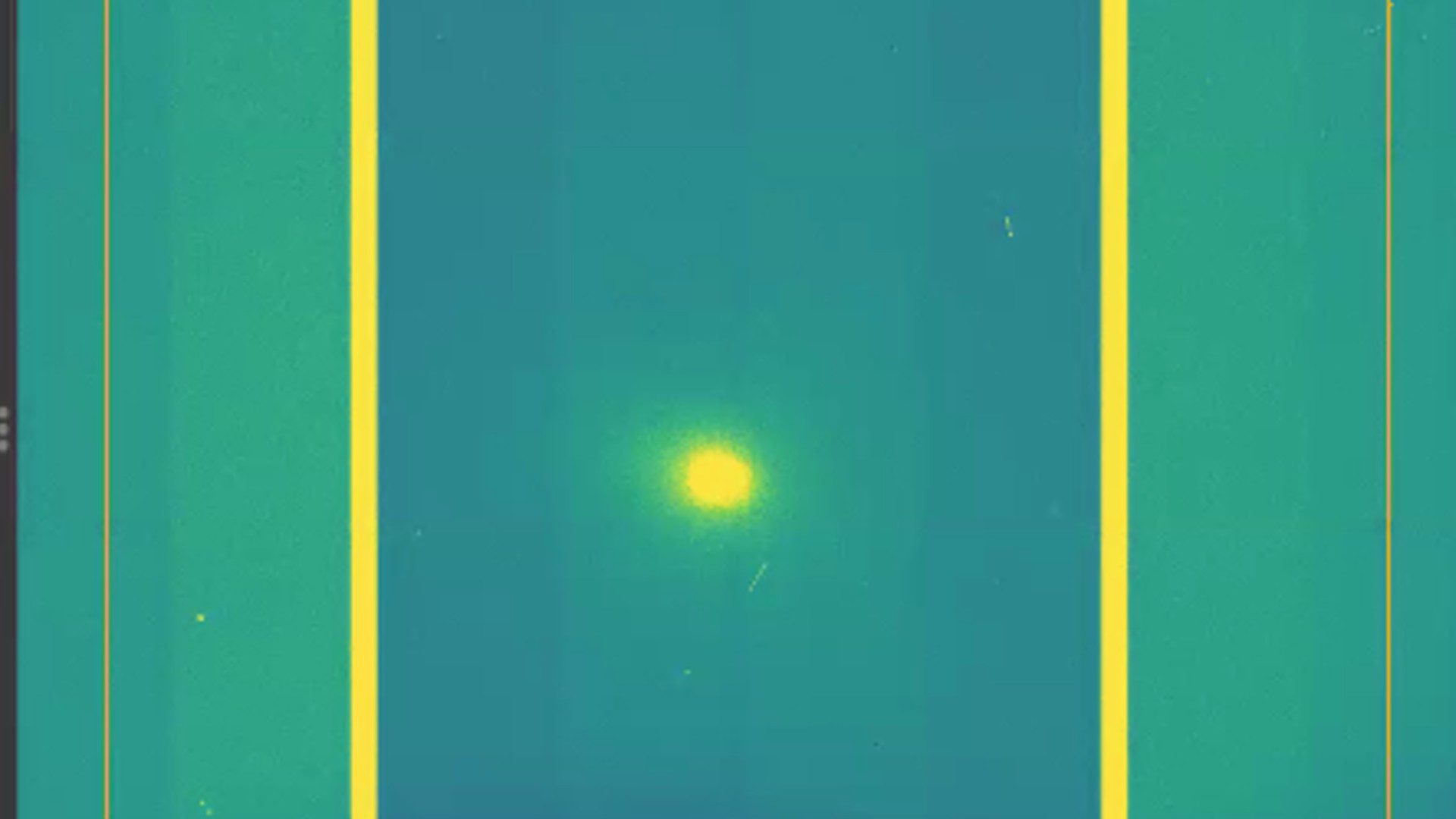Amazing New Sun Photos from Space
Moving in Stereo
Images from telescopes onboard STEREO spacecraft showing a coronal mass ejection event on December 12-13, 2008. Data from both spacecraft are shown simultaneously.
Closer View
A close up of the sun in extreme ultraviolet light taken by STEREO's Extreme Ultraviolet Imager (EUVI). Featured are magnetic loops filled with million-degree Celsius material.
Not an Illusion
A solar tsunami seen by the twin STEREO spacecraft. A movie showing this event helped convince scientists that this phenomenon is real, and not a visual illusion.
Floating Free
The STEREO (Ahead) spacecraft observed this visually stunning prominence eruption on Sept. 29, 2008 in the 304 wavelength of extreme UV light. It rose up and cascaded to the right over several hours, appearing something like a flag unfurling, as it broke
Into the Sun
NASA's twin STEREO spacecraft caught this image of a comet impacting the sun. The comet apparently survived the intense heat of the sun's outer atmosphere — called the corona — and disappeared in the chromospheres, which is a thin layer of plasma found be
Pieces of Flare
SDO observed as an active region emerged, expanded and blew out at least four flares over about a 40-hour period (June 11-12, 2010). These flares were about average in terms of their power.
Loop the Loop
An AIA image in 193 A after a solar eruption and a flare. The dark regions show the site of evacuated material from the eruption, and the large magnetic loops were formed during the flare.
Breaking space news, the latest updates on rocket launches, skywatching events and more!
How Green Was My Sun
Image of the Sun, taken by the SECCHI Extreme Ultraviolet Imager (EUVI) on the STEREO Ahead observatory on June 18, 2010 at 00:05:30 UT. This image was produced from the STEREO space weather beacon telemetry.
Corona Light
Image of the solar corona, taken by the SECCHI outer coronagraph (COR2) on the STEREO Ahead observatory on June 8, 2010 at 01:09:35 UT. Click to enlarge.
M-Class Solar Flare - Solar Dynamics Observatory
A powerful M9-class solar flare erupted from the sun at 10:09 p.m. EDT on July 29 (0209 GMT July 30).

Tariq is the award-winning Editor-in-Chief of Space.com and joined the team in 2001. He covers human spaceflight, as well as skywatching and entertainment. He became Space.com's Editor-in-Chief in 2019. Before joining Space.com, Tariq was a staff reporter for The Los Angeles Times covering education and city beats in La Habra, Fullerton and Huntington Beach. He's a recipient of the 2022 Harry Kolcum Award for excellence in space reporting and the 2025 Space Pioneer Award from the National Space Society. He is an Eagle Scout and Space Camp alum with journalism degrees from the USC and NYU. You can find Tariq at Space.com and as the co-host to the This Week In Space podcast on the TWiT network. To see his latest project, you can follow Tariq on Twitter @tariqjmalik.
